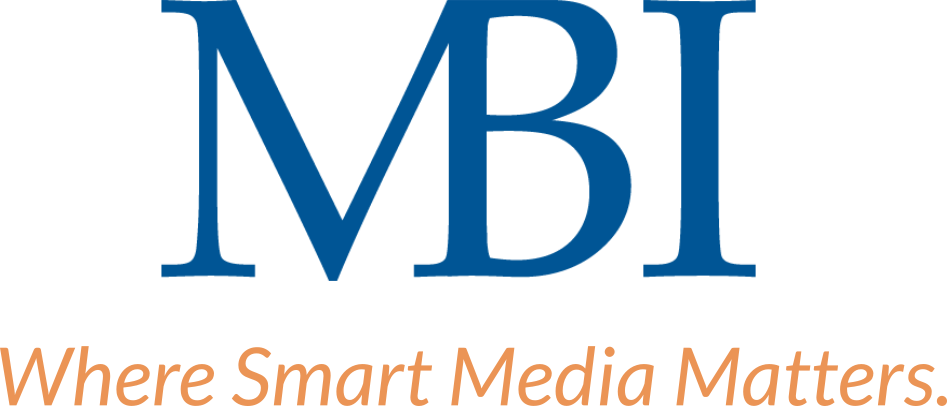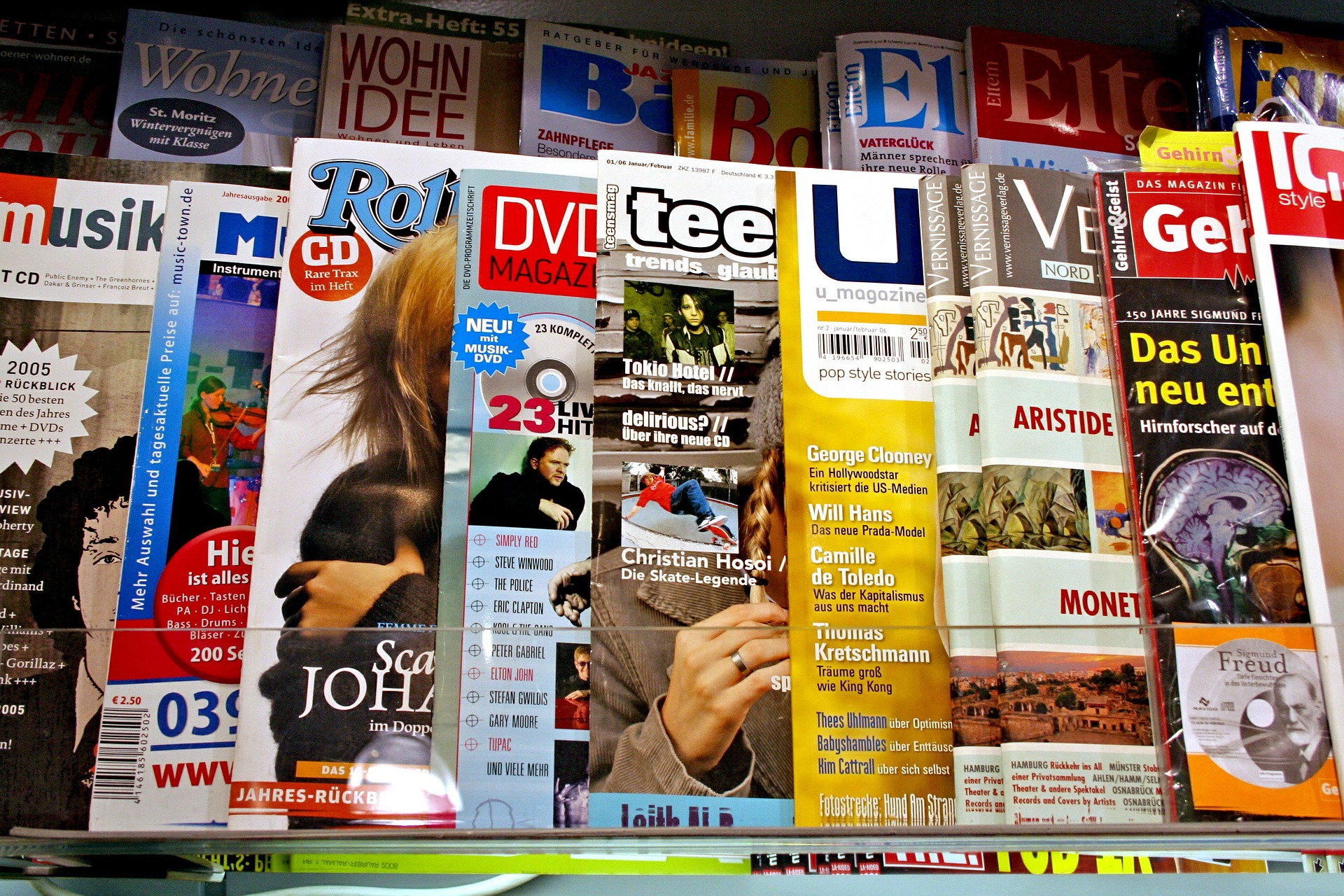As of January 2021, nearly 60 percent of the world's population are active internet users; they use the internet to send and receive information. What's more, 55 percent of U.S. consumers research major purchases online before buying.
In such a digital world, where does print advertising stand? Is there still room for print advertising in our modern world? Is it worth the investment?
With unprecedented media proliferation, innovation, and consumer participation in digital advertising, it's hard not to question the efficiency of traditional media, especially print. Even so, print media still offers undeniable advantages in reaching target audiences in an increasingly digital-first world. As shared by the International News Media Association, print is "Still the cornerstone for many of our media offerings to advertisers."
The truth is, print media as an advertising outlet can be a valuable asset to a business's overall marketing strategy, especially when paired with digital media.
Read on to learn more about how powerful print advertising can be in today's digital marketing landscape.
What is Print Advertising?
Print media is as varied as it is vast. From newspapers to newsletters, magazines to billboards, posters to letters, postcards to business cards, print media covers a broad range of media, each with a distinct purpose. Each medium serves a specific role in building top-of-mind awareness in consumers' decision process as they convert shoppers into buyers.
Newspapers are more aligned with building customer consideration (i.e., where to buy and when to buy). Magazines, for instance, cater to a very targeted audience. They have a reputation for "top of funnel brand building," establishing a particular image of your brand and providing an environment to tell a story or explain a complex product or service. And outdoor advertising, such as billboards, is an effective medium to enhance recall and consideration.
Each print medium has a purpose, and consumers, even today, respond well to the marketing intentions behind them. Americans have more confidence in the print medium than any other such as television, radio, or digital. Almost half of U.S. consumers share that they trust print, TV, and radio ads, while less than 1 in 5 of these same consumers reported that they have trust in social media ads.
Despite this fact, print advertising has experienced a steady decline over the last ten years, with billions lost in revenue. For example, in 2000, spending on advertising in newspapers peaked at $68 billion annually, but this value has quickly and steadily declined ever since. Advertising spending in newspapers fell to $18.3 billion in 2016. Since 2013, print ad revenue (as adjusted for inflation) had fallen below its spending levels from 1950, when the industry started tracking ad revenue—which was also when the U.S. population was half its current levels.
What is the Reason for a Decline in Print?
Around this time last year, a well-known furniture and home goods store, IKEA, chose to stop printing its catalog, which had been in production for seven decades. What reason did the store give for this shift? It listed the change in "media consumption" and "customer behavior" as the primary reasons for stopping its catalog.
In other words, IKEA's customers changed their behavior (favoring print) and adopted a different form of media consumption (digital). Companies H&M and Victoria's Secret stopped printing their respective catalogs for the same rationale.
By this year's end, online media advertising will account for almost $200 billion in the U.S., roughly 25% of that expenditure dedicated to social media advertising. In being "the second biggest market within digital advertising," advertising on social media is a significant reason print has experienced a decline.
The Pros and Cons of Print Advertising
Whether it's print or not, every marketing effort offers trade-offs when it comes to investment and cost. Here are the pros and cons of print advertising:
Pros
Forbes magazine recently reported a "revitalization" of print advertising; even the online media giant Facebook took out a newspaper ad to encourage Americans to vote, for instance. Mastercard took out a two-page ad in The New York Times to share support for the LGBTQIA+ community. These examples suggest that print advertising has inherent advantages that companies of all sizes should not overlook.
Engagement is the first and most significant advantage of print advertising. With billions of websites out there, peppered with rabbit holes of distraction, it is no wonder that the human attention span has suffered. Despite its vast impact, the digital age has had the unanticipated consequence of keeping viewers off task. Magazine ads, for example, make you pause, feel, and consider the product.
Additionally, compared to online advertising, print media can instill trust. Newspapers report 58 % more trust compared to any other kind of media. Trust for online media only reaches 27 percent.
Print advertising also allows brands to target specific audiences. Small businesses tend to have a local following, allowing them to engage with lifestyle-specific hyper-local community publications. Print media has the potential to connect with hyper-targeted local audiences, but it also is longer-lasting; unlike pop-up ads or banner ads, there's no button to close a digital window. This longevity gives organizations a solid foundation to build brand awareness, drive conversions, and gain a better ROI on media investment.
Cons
Despite these pros, the U.S. growth projections for popular print media like magazines and newspapers aren't entirely promising. Print media spending will continue to decline in the coming years. Forecasts indicate that Newspaper ad revenue will decrease from $13.6 billion in 2021 to $11.9 billion in 2025, a compound annual growth rate (CAGR) of -2.0%. In the consumer magazine ad market, ad revenue is estimated at $12.7 billion in 2021 but will fall to $11.6 billion in 2025, a CAGR of -2.8%.
It is often much quicker and simpler to post an ad on social media. However, these ads aren't always memorable. That's where the term "banner blindness" comes from, in the way consumers ignore the banner ads that cover the top or bottom of the page.
Even so, print ads tend to have longer lead times. They must go through production and distribution phases. Also, print ads are more effective after multiple viewings, which means marketers often have to invest more money to distribute more ads. Essentially, print advertising is usually more expensive than digital advertising. Small businesses should consider the long lead times and investment when creating their media plan to create a successful print media campaign.
What is the Future of Print Advertising?
If there are both disadvantages and advantages to using print, how does a business incorporate it into a marketing plan in an impactful way?
Answer: Use print with digital; they go hand in hand.
In combining both types of advertising, small businesses can reach a wider audience because you can tap into wherever they are, online and offline. It's the ultimate way to target an audience.
There are countless examples of these offline-to-online marketing strategies. Previously mentioned Facebook and Mastercard print campaigns mentioned included links and QR codes to visit carefully curated pages with videos and other media to continue consumer-brand interactions. In this way, print and online media advertising can work together to engage customers better, build lasting relationships, and establish a broader scope.
A broader scope also means a better ROI. By casting a wider media net, customers have multiple touchpoints to buy your product or service, which comes with the added benefit of making repeat purchases more effortless and satisfying. A consistent revenue stream and sustainable growth is the goal of all marketing campaigns, and a print-digital combination can help brands achieve this goal.
The combination of print media and online advertising can boost customer satisfaction. After all, customers will feel more confident in a brand if they have access to it on any platform.
Net, digital, and print media work together to build holistic, memorable brand interactions. Print media can be a valuable tool to encourage potential customers to visit your website, enter an online discount code, follow you on social media, or post about their experience. Just take a look at a 2021 study that showed that a combination of print news media and digital advertising was more effective than social media advertising by itself. And therein lies the power of a multi-tiered buying plan: Together is better than alone.
MBI: Let’s Work Together
Optimizing your plan to maximize ROI on time and within your budget is MBI's point of difference. At Media Brokers International, we are the leaders in helping businesses reach their desired audiences using the best combinations of both print and digital advertisements. With over 30 years in the media buying field, access to leading-edge research and resources, we have the experience and the foresight to navigate the complexity and nuances of omnichannel media planning and buying. Contact us to connect with one of our media strategists. Let's work together today.

